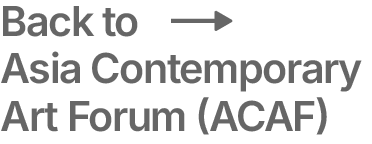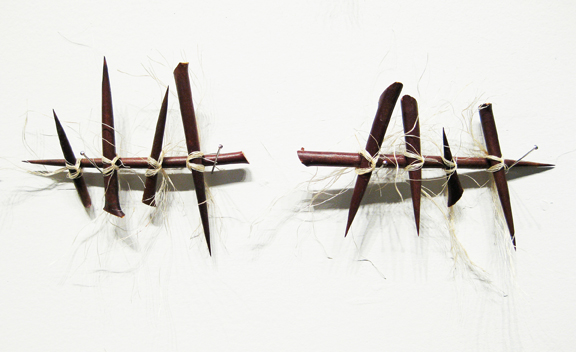Interview with Cui Fei
1. How did you start making art?
Influenced by my father, I started to draw at a very early age. My sister and I often drew together. Besides drawing for fun, we sometimes drew pictures while arguing. One of our neighbors commented to my parents: “I never saw kids arguing like this—without even exchanging a word, they can make each other cry!”
When I was a teenager, there were two professional high schools in China which started to readmit students a few years after the Cultural Revolution ended. My father suggested that I apply for this type of high school in order to have a better chance to enter Art Academy in the future. To prepare for the exams, I started formal training in drawing and gouache. Although not keen on this kind of training and very reluctant to leave home, I enrolled in the Affiliate High school of Zhejiang Academy of Fine Arts which was 18 hours away by train. During the 4 years of high school, in addition to the fundamental training, we were also introduced to design, Chinese painting, calligraphy and printmaking. There, I found my great interest in painting. After graduating from the high school, I was accepted by the Oil Department of Zhejiang Academy of Fine Arts (now China National Academy of Fine Arts).
Tracing the Origin VIII, Sand on floor, dimensions variable, 2010. Photo credit: David Broda
2. What experiences have most influenced your choice of subject matter, medium and style?
In the last few months of my college years, I started to develop a series of paintings that depicted close up images of nature, such as muddy roads and rocks. The paintings were painted in earth tone colors and with heavy textures. It was then that I began to use natural materials in my works, such as grass and strings on canvas.
Before moving to the US in 1996, I had already experienced dramatic social changes that occurred after China opened its doors to the West. Later, moving to the United States abruptly exposed me to a radically different world. I began to think of how to respond to these unexpected changes in life and develop a strategy to cope with it.
Faced with so many changes in my life, I want to find something more reliable, solid, and more permanent to hold onto; something that does not change because of cultural and geographical conditions or the passage of time.
In Chinese cosmogony, nature, human beings, and all other parts of the cosmos equally belong to one organic whole. They all interact as participants in one life process. The cosmic operations follow certain laws—Tao—which came out of primeval chaos, and represents a system of order or essential law which governs the entire universe. This Tao applied in ancient times and does so in the present as well; it applies to the East as well as the West. Immutable, I use it in my work to symbolize the constant that I’ve been searching for.
My work thus shifted from my interests in the image in nature, to the Chinese concept of nature. The medium I used has shifted from primarily painting to installation, printmaking and photographs. I often use found natural objects, such as tendrils, twigs, and thorns to compose a manuscript symbolizing the messages in nature.
3. Is your formal or informal training as an artist useful? How?
They are very useful. Some may think that the rigid training in China limits one’s development as an artist. But the perseverance I learned from that experience is quite beneficial in art and life. The training I received in the US was different as it focused more on verbalizing ideas and writing. I’ve found it’s very helpful to organize ideas and clarify my thoughts.
Installation View at the Warehouse Gallery, Syracuse University. Photo credit: David Broda
Not Yet Titled (back), Thorns, twines, and pins on wall, dimensions variable, 2009
Manuscript of Nature V_Syracuse (front), Tendrils and salt on floor, dimensions variable, 2010
4. Does your work reflect issues in yourself, in society or community?
Some of my work reflects personal issues, such as Read by Touch, which is a meditation on loss based on part of my personal history. Larger issues are also dealt with in my work, such as the relationship of human beings to nature. I have explored this notion with the Tracing the Origin series. Considering that Chinese writing originated from nature as ideograms and that over time the characters were simplified, abstracted and separated from their original context, my work takes a similar tack. I began working with found grape vine tendrils which I transformed into two dimensional works of different colors and scale or into three dimensional works made with varied materials. Different media used in this series, such as installation, printmaking, and photography are intended to symbolize how Chinese written characters have become detached from nature and by inference, how humans have also detached themselves from nature.
5. Do you appreciate culturally specific works of art? If so how does your personal and cultural background show up in your work?
I appreciate all great works of art, whether culturally specific or not.
6. How does your current portfolio fit into the rest of your body of work?
My current work continues to explore and develop three ongoing series: Manuscript of Nature—in which I use found natural objects to assemble ancient Chinese manuscripts; Tracing the Origin—please see question #4. The third series are calendar based works, which refer to either my personal life or historical events.
Not Yet Titled (detail), Thorns, twines, and pins on wall, dimensions variable, 2009. Photo credit: Cui Fei





